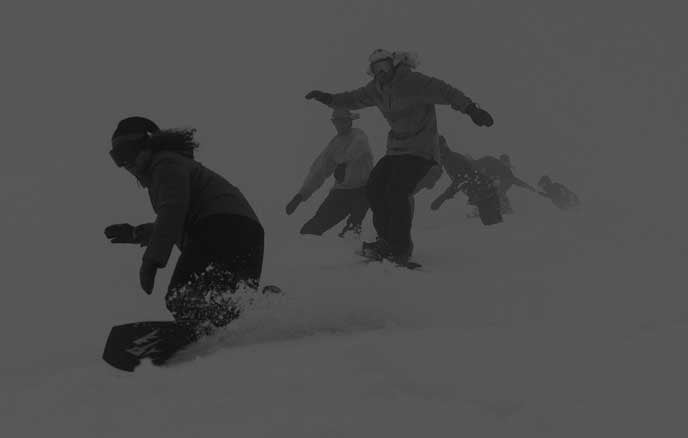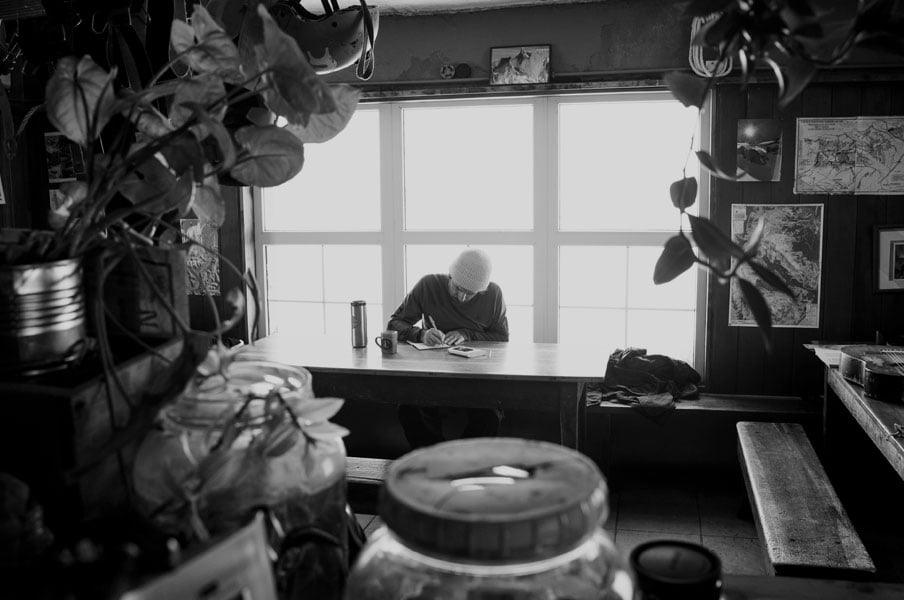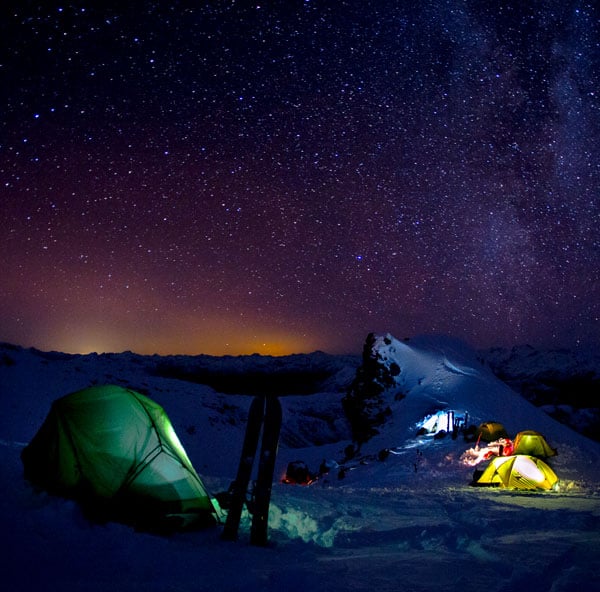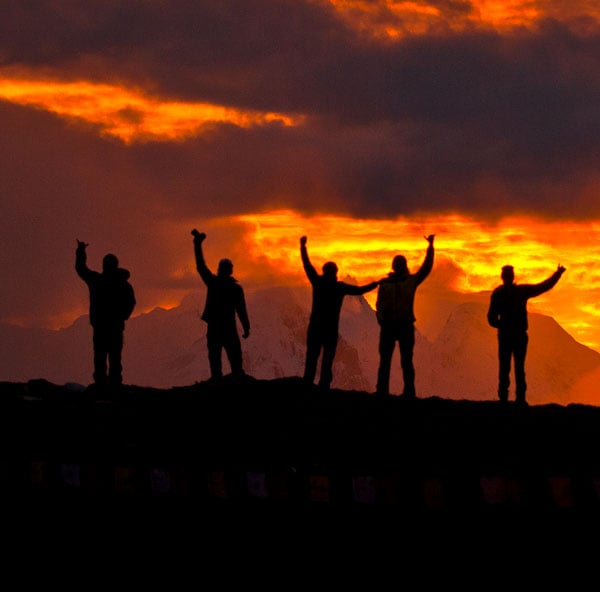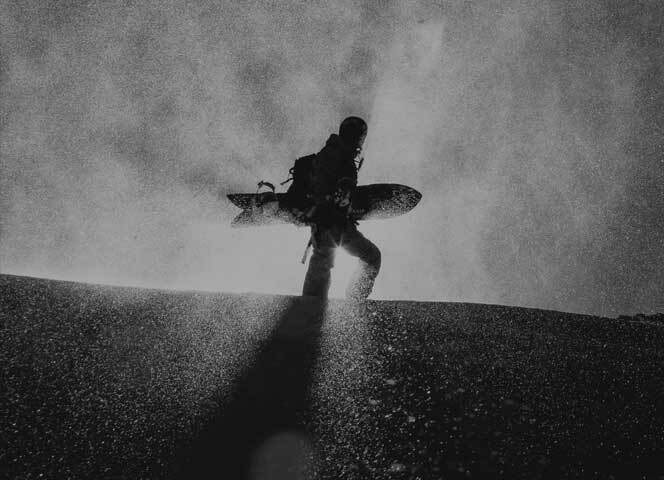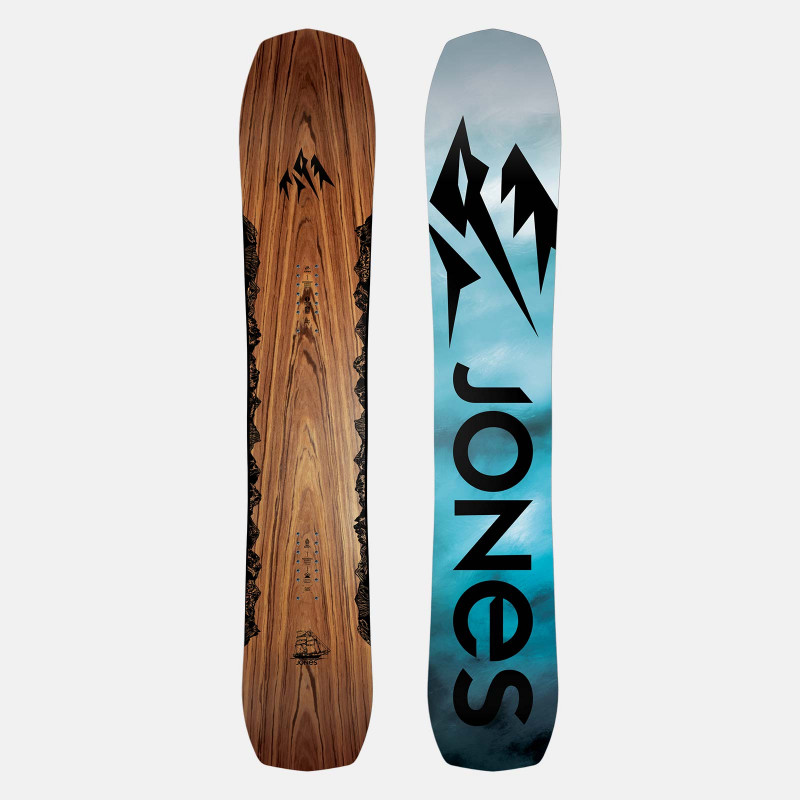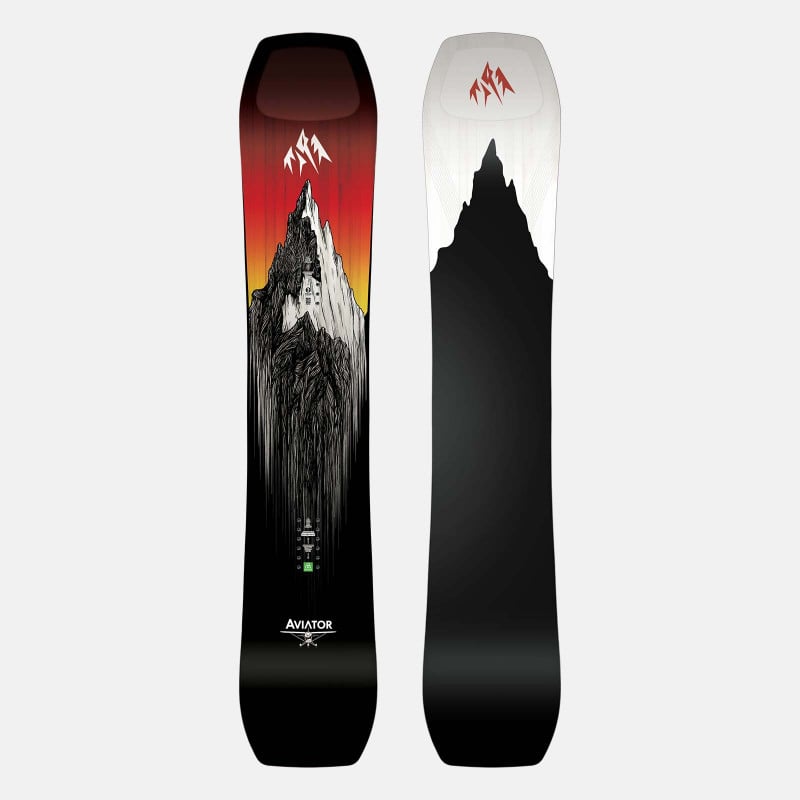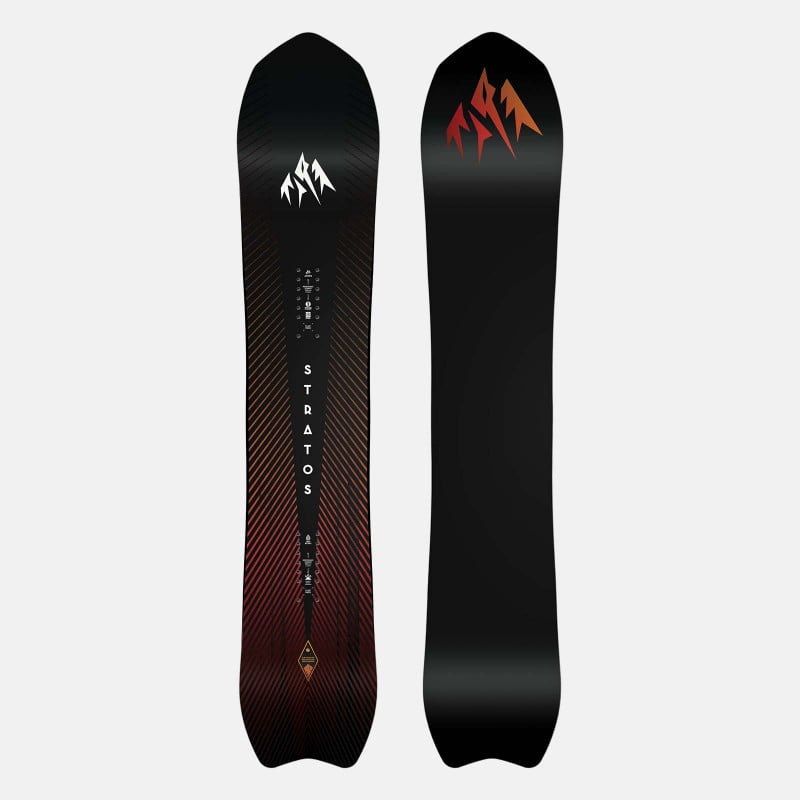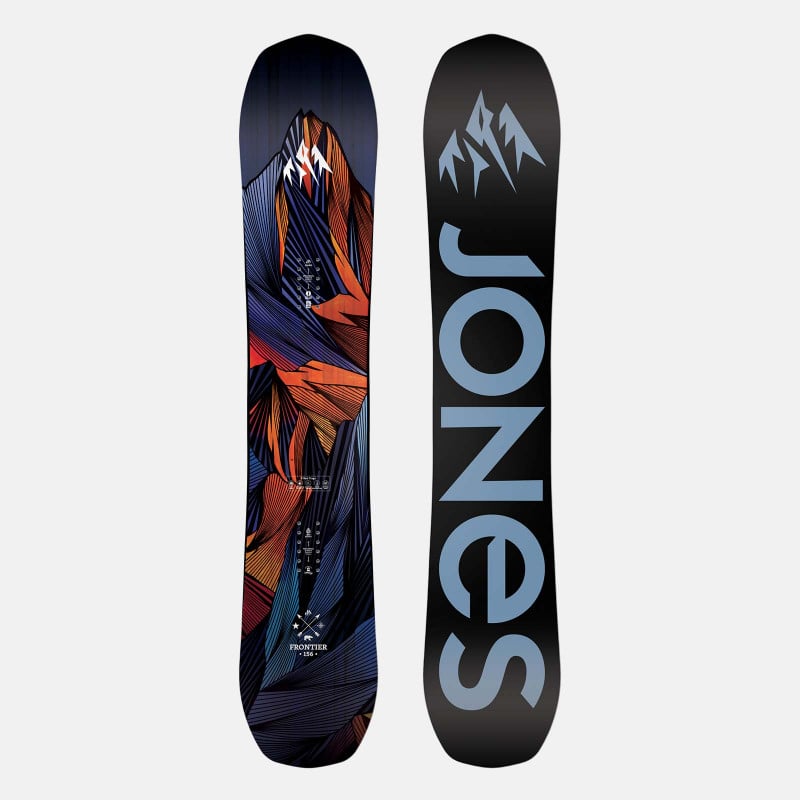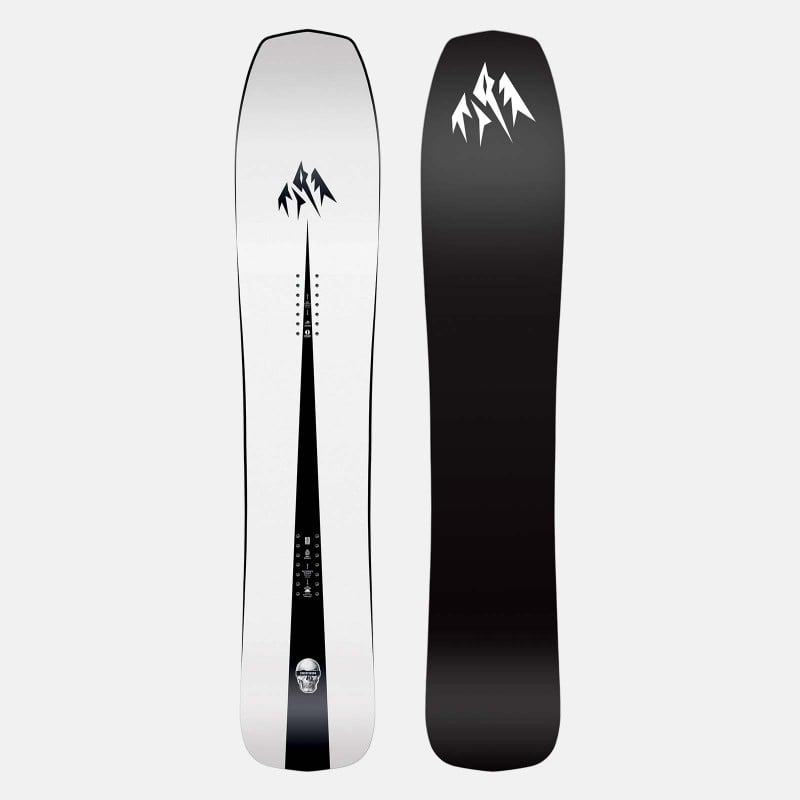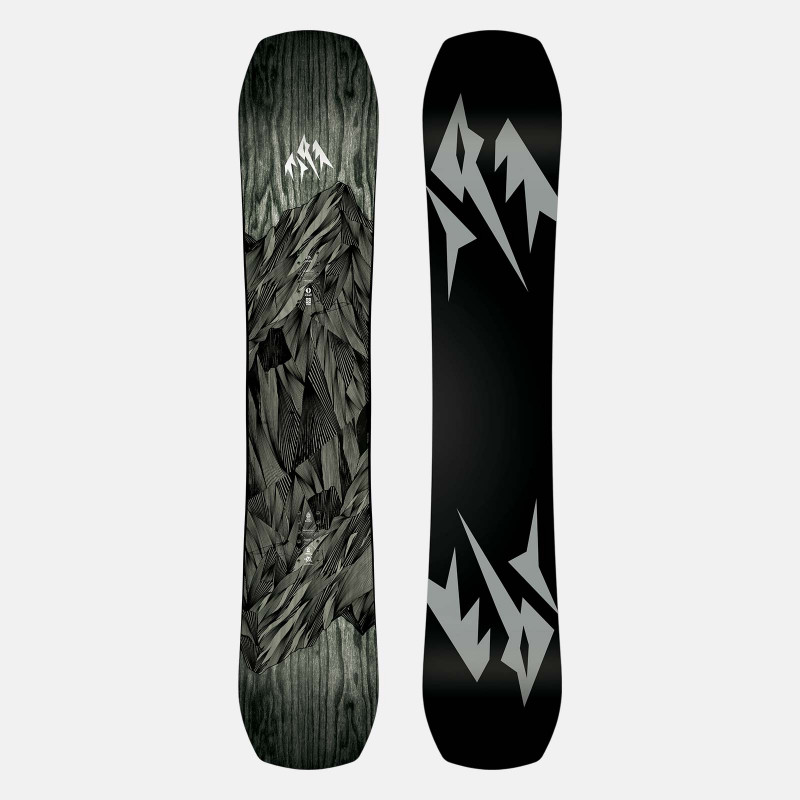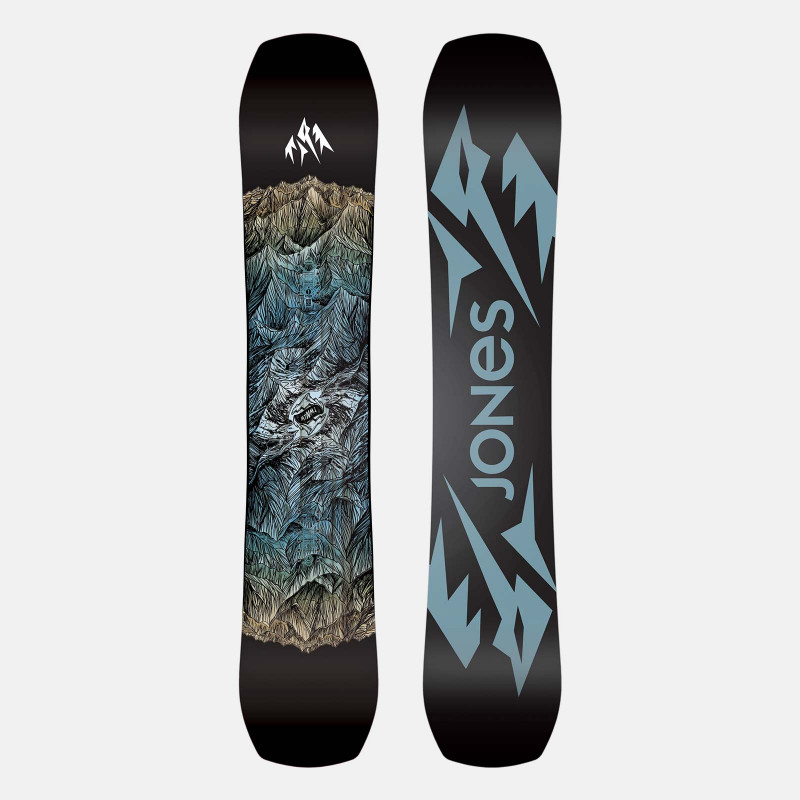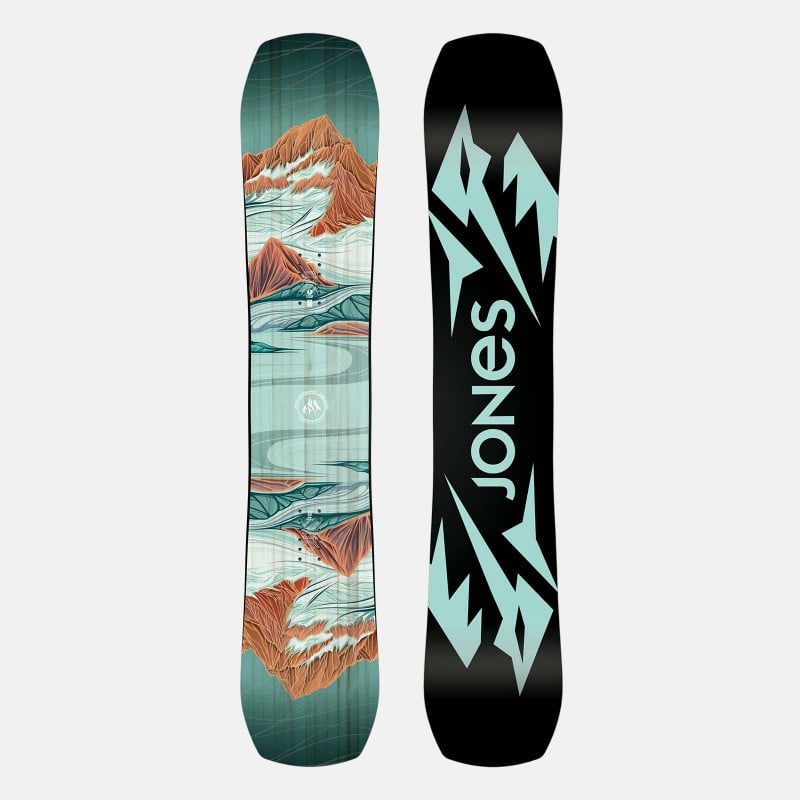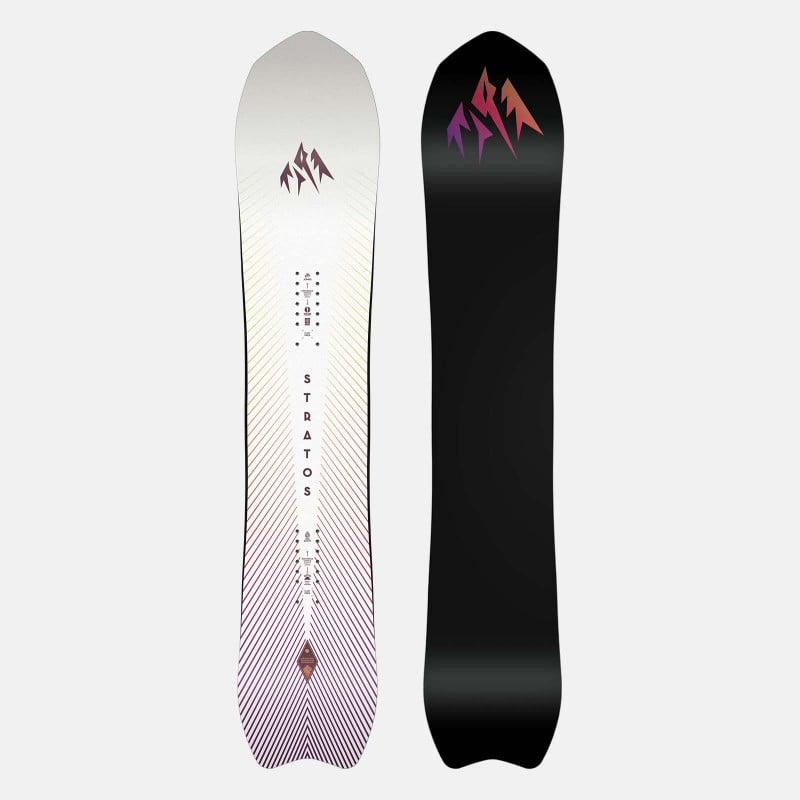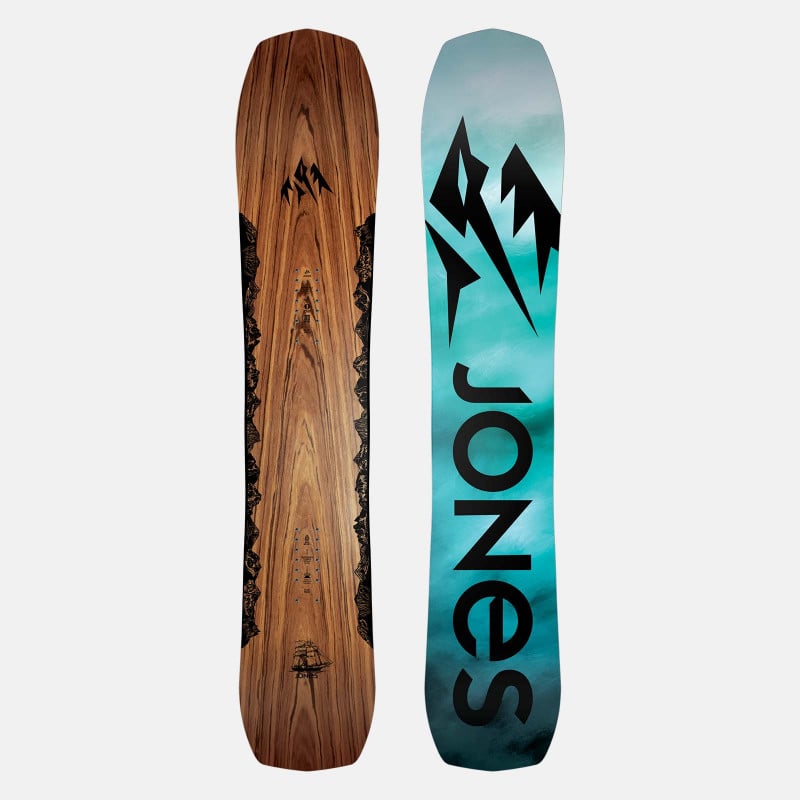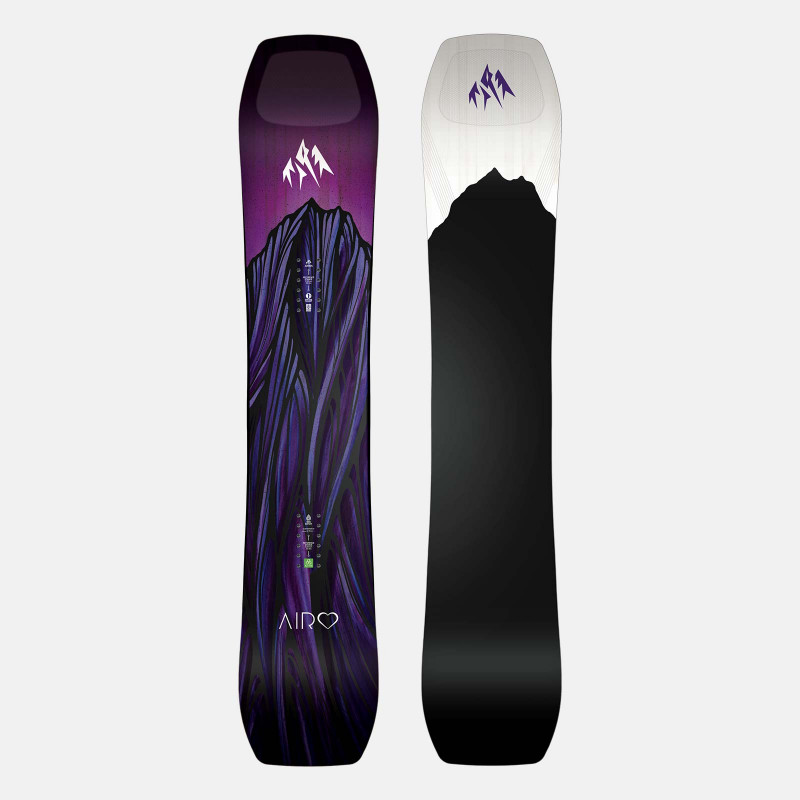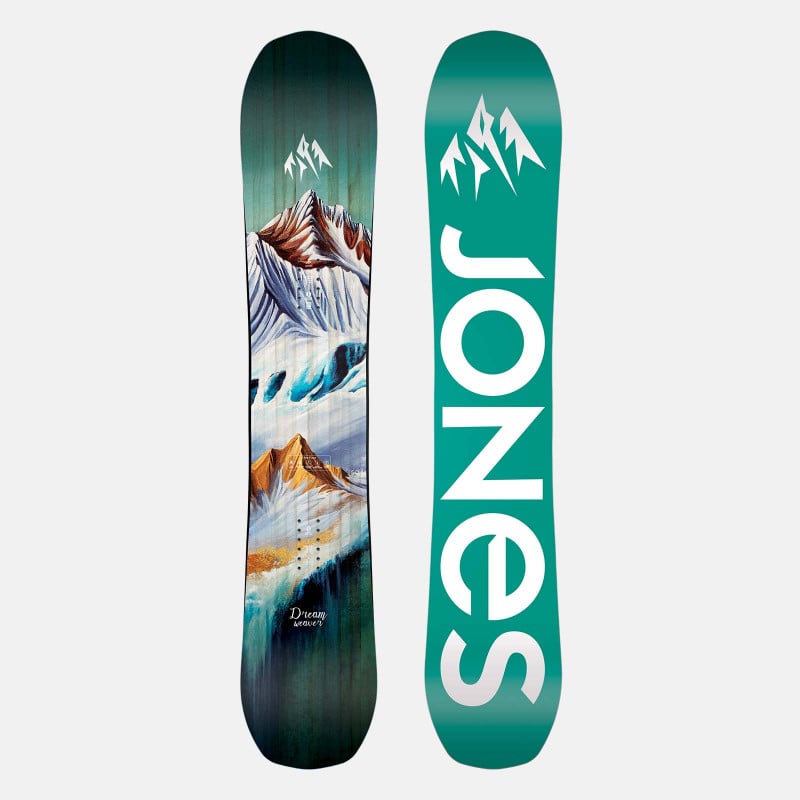
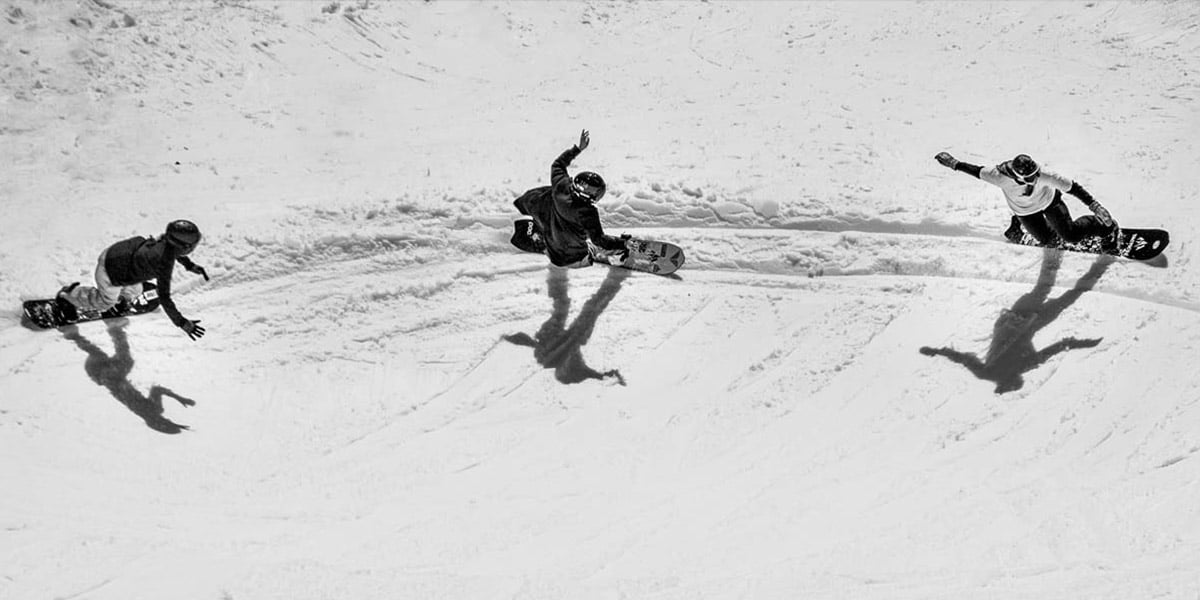
Find your natural riding stance
If only choosing a stance were as easy as flipping a coin, heads or tails, goofy or regular. Finding the best riding stance for your size, riding style and snowboard model can be tricky for many riders, even veteran riders. It’s easy to bolt on your bindings and go ride, but it’s not quite as easy to understand how stance angles and width are affecting your ability to turn, carve, stomp or pop on a given board.
To ride at your highest level it’s up to you to find your “natural” stance. Your natural stance is the stance that works best for your unique body and that enhances your natural ability to do the things on your snowboard that you like to do the most. Finding your natural stance may take some experimentation, but if you start with a solid understanding of the stance fundamentals you should be able to nail it down pretty quick.
Goofy or regular?
If you are new to snowboarding your first decision to make is whether you are goofy footed (right foot forward) or regular footed (left foot forward). Your dominant foot is typically your back foot as the back foot provides the power steering. The front foot provides balance and direction and is usually your less dominant foot.
Which foot do you step up a flight of stairs with first? Which foot do you naturally kick a soccer ball with? The answer to these questions is likely your back foot.
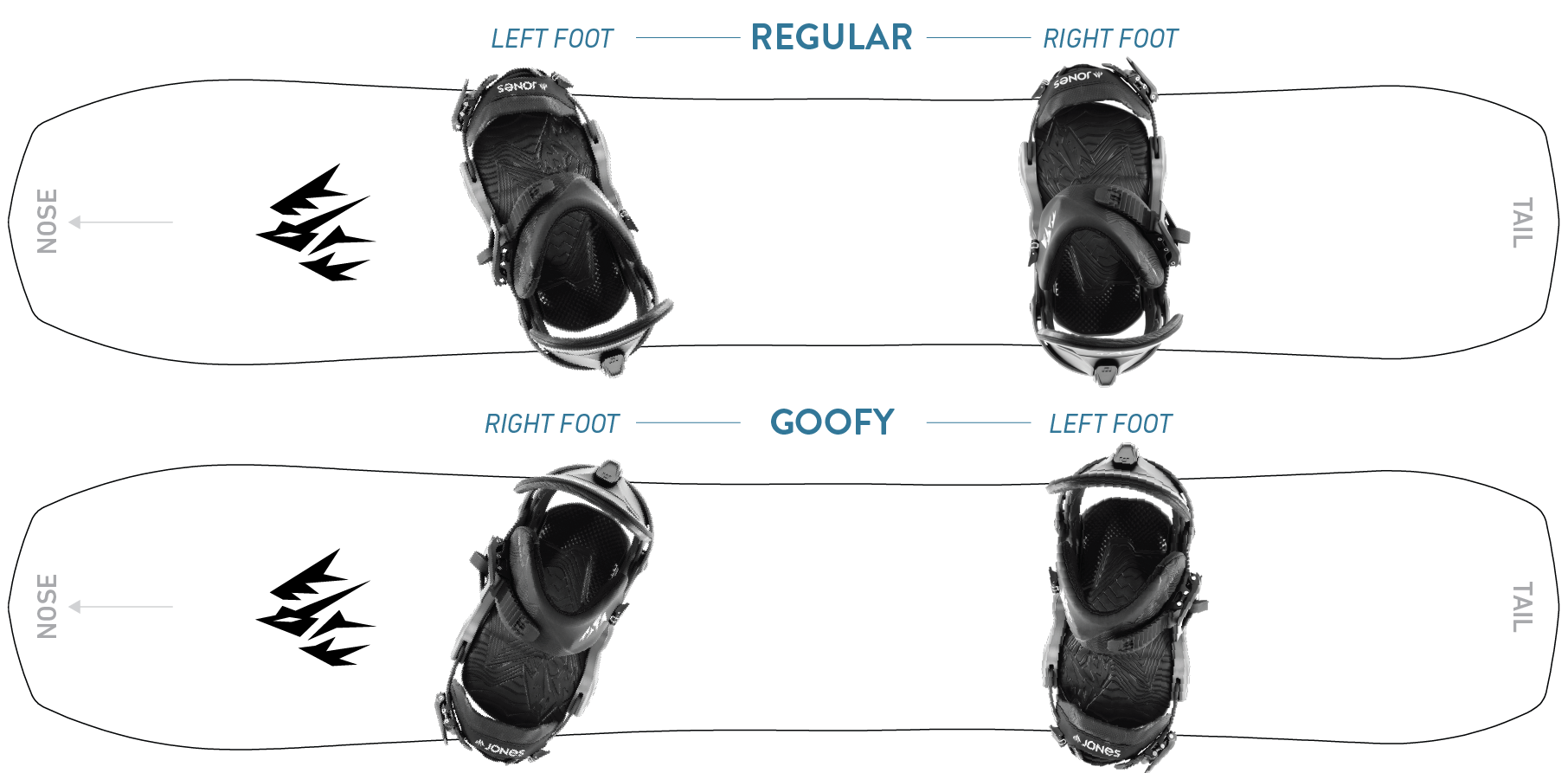
Choosing a stance width
Stance width plays a critical role in your balance and turning ability on a snowboard. There are several different theories as to how wide of a stance is best. What width will work best for you will come down to personal preference. Longboard, surf style riders tend to prefer a narrower stance as it keeps your hips in and allows you to pivot your weight quicker edge to edge than if your legs were spread wider. Technical freeriders and terrain park riders often prefer a wider stance that offers added balance stomping airs and holding it together bombing through rough terrain.
Until you develop a defined favorite riding style, most riders will find a slightly wider than shoulder width stance to be a good starting point. A just wider than shoulder width stance offers good stability and a powerful jumping position. Use this chart to find a stance width range that traditionally works for riders of these heights.
| Height | Recommended stance |
| < 5'1" / 155cm | 17-19" / 43-48 cm |
| 5'2"-5'4" / 156-163 cm | 19-21" / 48-54 cm |
| 5'5"-5'8" / 164-172 cm | 20-22" / 48-56 cm |
| 5'9"-6' / 173-184 cm | 21-23" / 53-58 cm |
| 6'1"-6'4" / 185-193 cm | 22-24" / 56-61 cm |
| > 6'4" / 193 cm | 23-25" / 58-63.5 cm |
For most boards, your ideal stance width should be within an inch of your board’s reference stance. Reference stance is the stance location that the dimensions of a given model/size board are designed around. You’ll find the reference stance location and width measurement printed on the topsheet inside the insert packs. With your bindings set on the Reference Stance you are positioned with the intended stance setback relative to the effective edge. Stance setback varies by model from 0-3 cm.
If you prefer a narrower or wider stance than the Reference Stance, you must move each binding in or out the same amount of holes. If you move one binding in and one binding out from the marked reference stance positions you will be riding the same stance width, but you will not be centered in the board’s sidecut. Riding in the Reference Stance is not critical, but it unlocks the intended board performance.
The maximum stance width of a board model/size is 1.6 inches (4 cm) wider than the Reference Stance. The minimum stance width of a board model is 3.1 inches (8 cm) narrower than the Reference Stance.

Join the Jones community
Sign up for our newsletter to get connected on the latest Jones stories and product launches
Choosing stance angles
The angles of your front and back binding play a huge role in how you can move your body over your snowboard. Your hips and knees align and move in different ways depending on which direction your feet are pointing.
It’s safe to say every rider will want their front foot angled toward the nose of the board. Angling your front foot towards the nose allows you to keep front foot pressure driving into a turn. The baseplate of your binding or splitboard hardware will have angle markings that read 0-30 degrees in two directions. Angling your binding toward the nose is referred to as a positive angle relative to setting your binding at zero. Setting your binding at zero aligns it completely perpendicular to the edge. Most riders will find a front binding angle of +15-21 degrees is ideal. Racers and more surf style, turn focused riders often run a more aggressive front foot angle (+21 degree or more) as it opens up your hips toward the fall line and allows you to rock deeper into toe side turns.
While all riders benefit from angling their front binding toward the nose, there are several different schools of thought on the best direction to angle your back binding. Your personal riding style and anatomy will determine what back binding angle club you belong to. The three back binding angle styles are:
Positive / positive (+/+)
If you angle your front and back bindings toward the nose you are riding positive/positive (+/+). Riders who run +/+ typically run only a few degrees of positive angle in the back binding (+3-6 degrees). By slightly turning your back binding toward the nose it aligns both your knees into the same plane and makes it easier for you to dive into toe side turns more aggressively. Running positive angle on your back foot does make riding switch more challenging but the “crossed-up” feeling can be overcome with experience. Running +/+ angles on directional board models like the Storm Chaser and Lone Wolf is ideal as these board shapes aren’t designed to ride switch.

Positive / zero (+/0)
If you angle your front binding toward the nose and keep your back binding set perpendicular to your edge at zero degrees you are riding positive/zero (+/0). Setting your back binding at zero is a very common back binding stance angle. By keeping your foot straight across the board you can lean into front side carves and ride switch without cross loading your knee. Setting your back foot at zero is a great place to start as you experiment with the angle of your front binding and stance width.

Positive / negative (duck)
If you angle your front binding toward the nose and angle your back binding toward the tail you are riding positive/negative, otherwise known as a “duck” stance. Terrain park rippers who ride switch a lot and freeriders who like to run a wide stance for added balance often prefer a duck stance. These riders typically run only a few degrees of negative angle in the back binding (-3 to 6 degrees). That little bit of negative angle can drastically improve your stability landing switch and will help your body look less “crossed-up” riding switch.

One stance or change stance?
Some riders find that they benefit from changing their stance depending on what board they are riding. Jeremy Jones is one of those riders. He rides with a positive/positive stance on most boards (including all the directional, surf series boards), but switches to a slightly duck stance if he is riding a twin board. He also varies his stance width and stance angles depending on board size. The smaller the board, the narrower his stance.
Other riders find that they benefit from keeping the same stance regardless of the board shape or size. The theory here is that it allows you to maintain the stability and positioning over your feet that you are most used to regardless of how the board is different.
Setting back stance for powder days
On deep powder days keeping your nose afloat is critical. Setting your stance back so that your board is set up with more nose than tail can definitely help on the deep days and especially if you are riding a twin or directional twin shape. Start by setting your stance back 1-2 in (2-5cm) and try to setback each binding the same amount relative to the reference stance.

Jones Ambassadors' riding stances
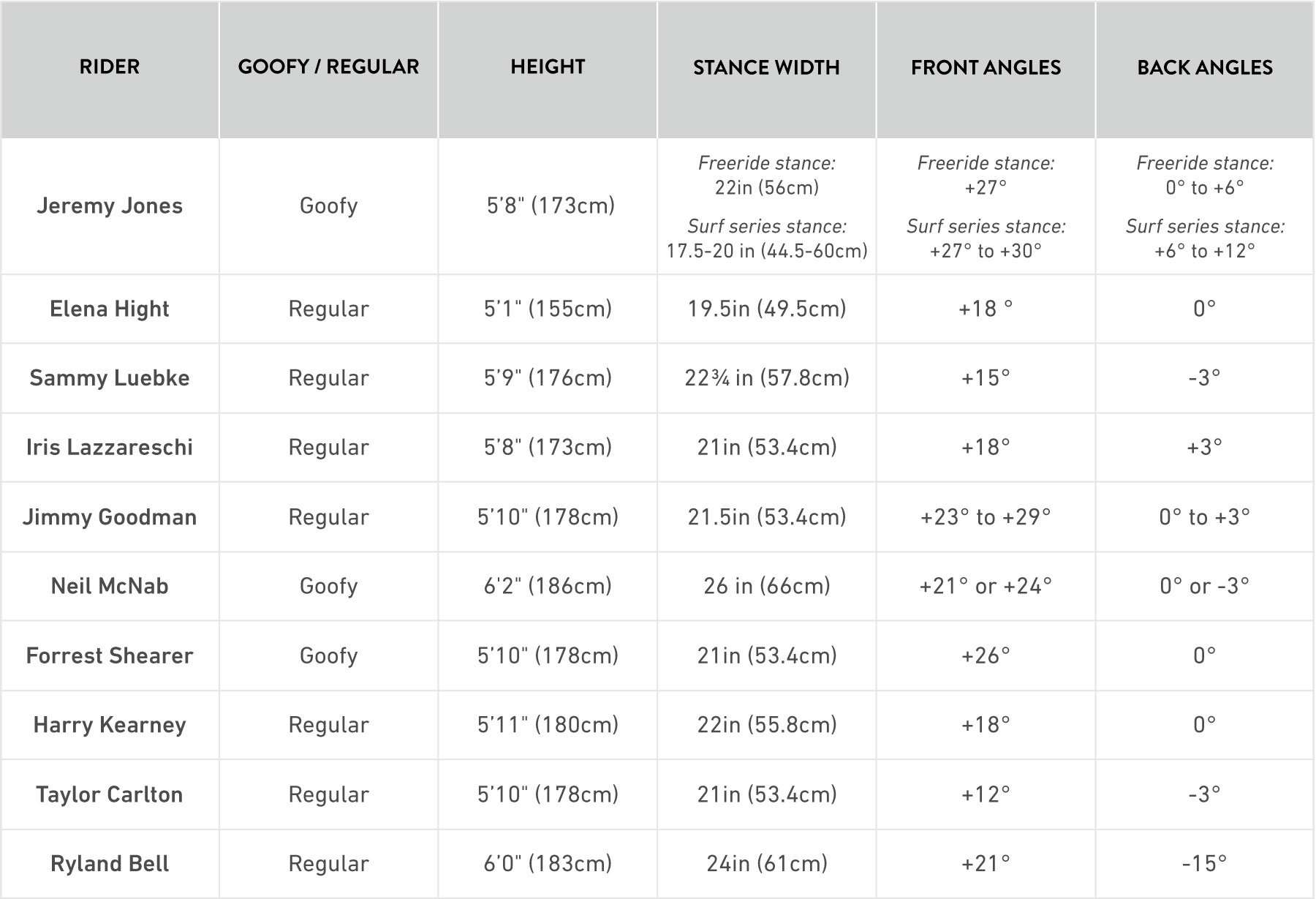
See what others are riding
Jones global riding survey
See what others are riding
Jones global riding survey
Experiment and pay attention
Don’t worry if you don’t nail your natural stance the first time you set up a new board. The best strategy is to start with a stance at the reference stance width and choose stance angles that traditionally enhance the style of riding you prefer, +/+ for surf style, +/0 for all-mountain, duck for park. Then the next time you go out, switch up your angles to a different style and see how that changes your riding abilities/style. With just a couple shred sessions you should be close to dialing in what stance feels best for you on that board.
High powered body x board connection
Designed to work together
Our Mission
Design innovative mountain gear that sets new performance standards and be a leader
in
manufacturing sustainability, environmental outreach and backcountry education.


© 2024 Jones Snowboards. All rights reserved.
Nidecker North America, 11253 Brockway Rd. Suite E202, Truckee, California 96161 - USA
